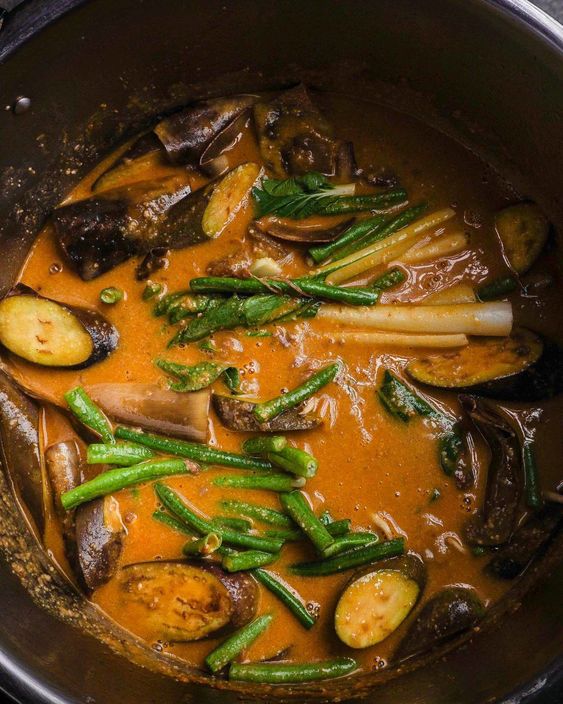Relish Filipino Cuisine with These Filipino Food Recipes.
Relish Filipino Cuisine with These Filipino Food Recipes.
Blog Article
Genuine Filipino Food Recipes to Try in your home
Exploring genuine Filipino food dishes presents an opportunity to value the complex tastes and social relevance behind each dish. From the well-loved Adobo, with its savory marinate, to the tangy Sinigang that personifies the essence of Filipino convenience, these dishes invite a much deeper understanding of traditional cooking practices. Utilizing fresh, local active ingredients is necessary, as is welcoming common eating-- a trademark of Filipino culture. As we take into consideration the important elements and strategies that define these cooking treasures, one might question what specific dishes can absolutely record the heart of this vibrant cuisine.
Popular Filipino Dishes
Filipino food boasts a rich tapestry of flavors and practices, with over a dozen legendary recipes that highlight the nation's diverse cultural influences. Among the most well-known dishes is Adobo, a savory stew commonly made with chicken or pork, marinated in vinegar, soy sauce, garlic, and spices. Its tangy flavor profile makes it a staple in Filipino families.
One more beloved recipe is Sinigang, a sour soup commonly made with tamarind, tomatoes, and different veggies. This recipe can include pork, shrimp, or fish, and its rejuvenating taste is excellent for warm environments. For those with a craving for sweets, Leche Flan-- a luscious sugar custard-- acts as a prominent dessert, showcasing the Filipino penchant for rich, pleasant flavors.
Kare-Kare, a passionate oxtail stew with a thick peanut sauce, together with the iconic lumpia, or springtime rolls, better exemplify the range found in Filipino cuisine. Each meal not only uses unique preferences however additionally tells a story of regional active ingredients and historic impacts, making Filipino food a vivid representation of its society and heritage.
Essential Ingredients for Filipino Food Preparation
The significance of Filipino cooking depends on its essential active ingredients, which offer as the structure for the country's beloved recipes. A selection of flavors and textures collaborated, showcasing the diverse social impacts that form Filipino food.
Key ingredients include rice, the staple that comes with almost every meal, representing nourishment and community. Soy sauce, vinegar, and fish sauce (patis) are important for flavoring, imparting umami and deepness to dishes. Fresh natural herbs like cilantro and basil include aromatic quality, while garlic, onion, and ginger supply a robust flavor base.
Protein sources such as pork, hen, and fish and shellfish are main to numerous dishes, often marinaded to boost preference. Veggies like eggplant, bitter melon, and eco-friendly beans contribute vital nutrients and equilibrium - Filipino food recipes. Coconut milk is another substantial active ingredient, providing creaminess and a subtle sweet taste to various stews and desserts
Finally, calamansi, a citrus fruit, supplies a rejuvenating tang that raises dishes and drinks alike. Together, these active ingredients develop the vivid and abundant tapestry of flavors that define Filipino food, making it both soothing and distinct. Comprehending these principles is crucial for any person wanting to duplicate authentic Filipino dishes at home.
Step-by-Step Dish Overview

Begin by preparing your components. For Adobo, slice the meat into consistent items and marinade it in soy sauce, vinegar, garlic, and bay leaves for at least 30 mins. Next, heat oil in a frying pan and sauté the garlic and onions up until great smelling, after that add the seasoned meat, allowing it to brown evenly.
For Sinigang, begin by steaming water in a pot and including your choice of meat. When tender, incorporate tamarind paste or fresh tamarind for that signature sour taste. Adhere to with vegetables like radish and kangkong, cooking till simply tender.

Tips for Genuine Flavor
Usually, attaining genuine taste in Filipino recipes depends upon the cautious option and therapy of ingredients. Start with fresh, top quality fruit and vegetables, as the vibrancy of vegetables and herbs significantly enhances the dish's overall preference. Staples like garlic, onions, and ginger create the fragrant structure for several have a peek at this website recipes; using them in appropriate proportions is crucial.
Selecting the appropriate healthy protein is similarly crucial. Traditional adobo typically employs poultry or pork, marinaded to take in the marinate's full flavor. Additionally, consider sourcing locally generated or regional components, as they can give authenticity that store-bought alternatives do not have.
Food preparation strategies likewise play a crucial role. Slow-cooking methods, such as braising or stewing, enable flavors to fuse beautifully, while frying can add a gratifying structure. Do not ignore seasoning; using salt, fish sauce, or soy sauce at the ideal minutes can elevate a recipe dramatically.
Offering and Taking Pleasure In Filipino Food
Cooking experiences are enriched when Filipino food is served with focus to practice and community. The practice of sharing dishes is main to Filipino culture, signifying unity and friendliness. When serving Filipino recipes, consider making use of traditional serveware, such as clay pots or bamboo baskets, which improve the authenticity of the experience.
Usually, Filipino dishes are appreciated family-style, with a range of recipes put at the center of the table. This common method motivates interaction and enables guests to example different tastes. A well-curated spread could include staples like adobo, sinigang, and lumpia, complemented by rice, which is a basic component of every dish.
Accompanying the food with traditional spices, such as soy sauce, vinegar, or chili paste, can boost the dining experience, welcoming diners to personalize their plates to their choices. In addition, integrating regional beverages, like calamansi juice Get More Info or tuba, can enhance the overall flavor account.
Final Thought

Report this page